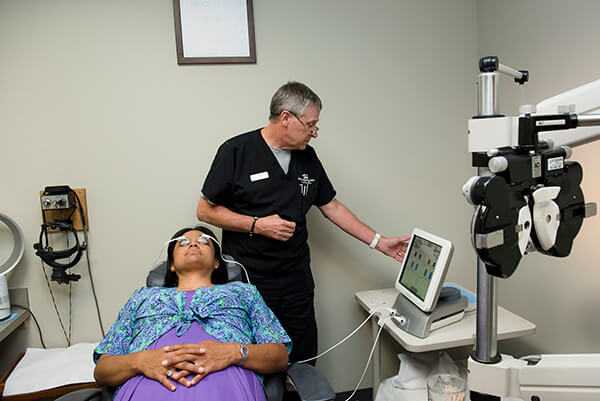Austin Dry Eye Center

If you are experiencing dry eye syndrome in Kyle or Austin, Texas, the Austin Dry Eye Center team at Westlake Eye Specialists is dedicated to serving patients’ specific needs in treating dry eye. Dry eye, or keratitis sicca/ keratoconjunctivitis sicca, related discomfort is one of the most frequent afflictions brought to eye doctors from their patients.
Treatment options for dry eye syndrome include artificial tears, which provide temporary relief from dry eye syndrome, and punctal occlusion. Punctal occlusion, or punctal plugs, involves the insertion of a small medical device that blocks the puncta of the eye. This prevents the tears that are naturally produced by the eye to either partially or completely be blocked from draining from the eye.

Symptoms of dry eye can deviate from the below list, however, patients that suffer from dry eyes usually experience a number of the following:
- Burning sensation
- Sandy/gritty sensation
- Foreign body sensation
- Dryness
- Redness
- Scratchiness
- Blurred Vision


